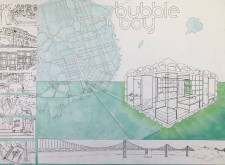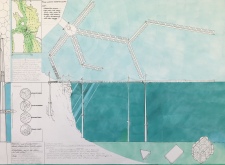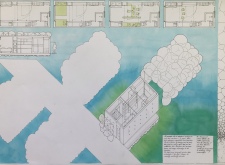5 key facts about this project
The floating community at Treasure Island is an innovative response to the growing need for affordable housing in San Francisco. Located on the water, it offers a solution that combines sustainability with modern living. The design is focused on creating a network of modular homes that prioritize community interaction while addressing environmental challenges.
Design Concept
The layout features prefab housing units connected by rectangular boardwalks. This arrangement allows for flexibility and adaptability, essential for a site that experiences tidal forces. The use of a hexagonal layout encourages residents to interact and fosters a sense of belonging. The spaces are designed not only for living but also for social engagement, accommodating small gatherings and larger community events alike.
Materials Used
Material choices are important for the project's success. Pneumocell is used for the housing modules, which provides necessary thermal insulation and buoyancy. It also has waterproof and fire-retardant features, adding safety to the design. Molded polyethylene is selected for connectors and boardwalks, reflecting a commitment to using recyclable materials. Stainless steel is incorporated in tidal turbines, ensuring resistance to the corrosive elements of the saltwater environment. Dune light fixtures powered by solar energy contribute to the sustainability aspect.
Community Engagement
Creating spaces for community engagement is a key aspect of the design. Beyond the individual housing units, the design includes broad boardwalks for activities, a core field for team sports, and an underwater area for social gatherings. These features are aimed at enhancing the residents' experience, promoting interaction, and supporting a vibrant community atmosphere.
Natural Ventilation
Design attention extends to environmental comfort through features like double-pane horizontal windows. These windows optimize natural ventilation, linking the indoor spaces with the fresh air of the Bay. The living units also include pull-out walls and adaptable amenities, allowing residents to customize their spaces according to their needs. This design choice emphasizes functionality while maintaining a connection to the surroundings.





















































